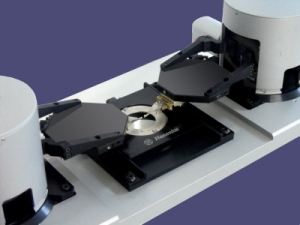Aug 19 2010
Nanonics’ Hydra MultiProbe BioScanned Probe Microscope is a new revolution in the BioAFM market that resolves many of the limitations of BioAFM, opening new horizons for the application of AFM in biology.
Its ability to allow integration with any upright or inverted microscope – among other important features – has earned it Microscopy Today’s 2010 Innovation Award.
 Hydra MultiProbe BioScanned Probe Microscope
Hydra MultiProbe BioScanned Probe Microscope
Microscopy Today's MT-10 Awards recognize the best new products and methods across the entire field of microscopy. Since the field is broad, Microscopy Today presents ten awards per year - five primarily related to the life sciences and five related to the physical sciences. In each of these areas, there are usually interesting new developments in light microscopy, scanning probe microscopy, electron microscopy, ion microscopy, acoustic microscopy, microanalysis, specimen preparation, etc. These awards honor the best developments in microscopy from the previous calendar year.
The winners were honored at the summer Microscopy & Microanalysis 2010 meeting in Portland, Oregon on August 5, 2010.
Descriptions of the winning products and methods will be published in the print and digital editions of the September 2010 issue of Microscopy Today.
The Hydra’s signature open design can be integrated into any microscope (unlike other BioAFMs which are limited by geometric or optical obstruction), including advanced concepts in optical microscopy such as 4pi configurations and many non-linear optical protocols.
Further, The Hydra incorporates tuning fork feedback mechanism, which provides UltraSensitive Liquid Cell operation for new sensitivities in AC force spectroscopy.
Its Tuning Fork Liquid Cell also permits Nanonics to offer MultiProbe Atomic Force Microscopy to the BioAFM researcher allowing for new directions in BioAFM imaging and nano-manipulation.
The Hydra also includes a NanoToolKit of glass-based probes including transparent AFM probes and nanopipette probes for conductance and futuristic structurally correlated patch clamp applications.
Ideal for all modes of optical microscopy including standard fluorescence techniques – confocal, TIRF, FRET and DIC – The Hydra can also provide advanced chemical imaging – such as NSOM and AFM Raman combinations with Tip Enhanced Raman Scattering (TERS) – without introducing any constraints to the microscope or the microRaman platform used.
Source: http://www.nanonics.co.il/